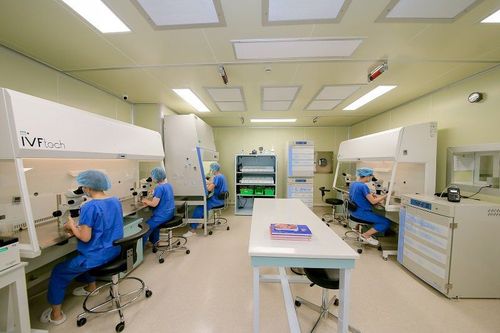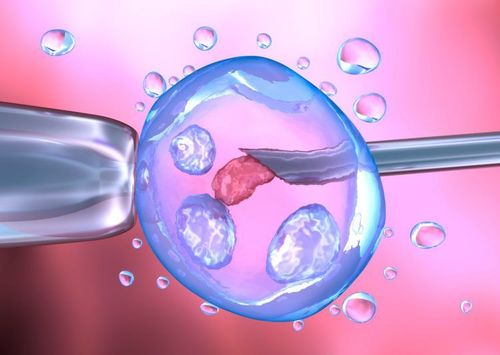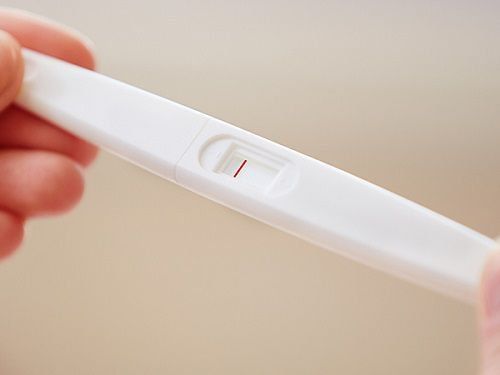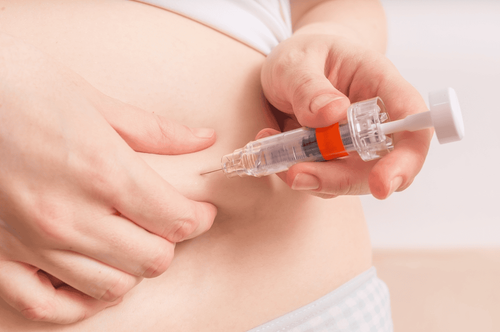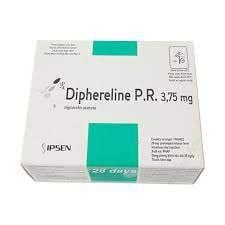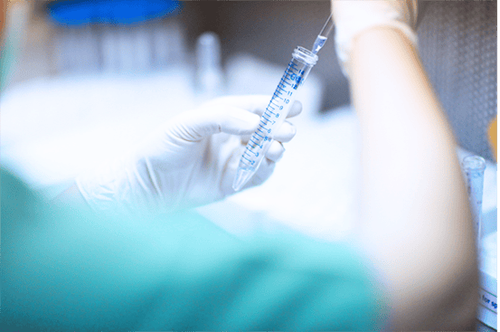This is an automatically translated article.
In vitro fertilization (IVF) is one of the methods of artificial insemination with a high success rate. Reproductive measures for infertile couples by combining eggs and sperm outside the body.
1. What is in vitro fertilization?
In vitro fertilization is a method of assisted reproduction for infertile couples by combining eggs and sperm outside the body. The embryo formed after the egg and sperm are successfully combined will be transferred back to the woman's uterus. The embryo then implants, develops into a fetus as in the case of natural conception
In vitro fertilization IVF is a special technique that helps sperm and egg fuse together in a laboratory environment. After being filtered and washed, sperm will be inoculated with eggs in a medium plate and incubated in a cabinet. Sperm can penetrate the egg and fertilize it within the first few hours. In this technique, the egg and sperm meet, fuse together naturally to form an embryo.
2. In vitro fertilization (IVF) is indicated for whom?

Thụ tinh trong ống nghiệm (IVF) được chỉ định cho nhiều trường hợp hiếm muộn, vô sinh
Obstruction of two fallopian tubes. Endometrial optimism. Eggs please. Unexplained infertility, sperm injection into the uterus many times but failed. Low sperm count, weak sperm, retrograde ejaculation or no ejaculation at all. No sperm in semen (sperm collection by epididymectomy, testicular surgery).
3. Procedures for performing in vitro fertilization (IVF) at Vinmec International General Hospital
The process of performing in vitro fertilization (IVF) is carried out according to the following steps.
Examining and evaluating the reproductive health of both husband and wife. Doctor: Giving indications for in vitro fertilization, making documents, applying for approval of records and treatment regimens from hospital leaders Wife: Having an ultrasound, taking a test on 2 days of menstruation, starting to use ovarian stimulant. The wife is injected with hormones to stimulate ovulation for 9-12 days. The doctor will inject drugs to induce ovulation 36-40 hours before oocyte retrieval. Ovulation aspiration, ICSI, embryo culture Transfer embryos into the wife's uterus day 3 - day 5 Pregnancy test after 14 days of embryo transfer. Ultrasound after 28 days of embryo transfer Step 1: Examine and evaluate the reproductive health of both husband and wife.
Do the following tests on the wife:
Endocrine tests: Quantify levels of sex hormones (estrogen, progesterone,...) and sex hormones (LH, FSH). Sexually Transmitted Disease Testing: Taking blood for tests to check for sexually transmitted diseases such as syphilis, HIV, hepatitis B and taking vaginal fluids to test for Chlamydia,... Gynecological ultrasound: Checking and detecting gynecological problems such as uterine fibroids, ovarian cysts, polycystic ovaries, congenital abnormalities of the female reproductive tract... Conduct basic follicle counting on both ovaries on the first day of the menstrual cycle. Do a semen analysis for the husband: This test is to check and evaluate the quality and quantity of the husband's semen.
In case the husband does not have sperm, other specialized tests such as sex hormone testing, testicular ultrasound, etc. must be carried out. In addition, the husband can also take blood for examination. have sexually transmitted diseases such as hepatitis B, syphilis, gonorrhea, HIV, ... or not.
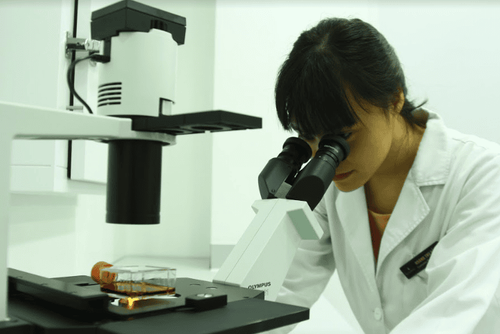
Cả hai vợ chồng sẽ được làm một số xét nghiệm để khám và đánh giá tình trạng
Step 2: Stimulation of ovaries
The wife is injected with ovarian stimulation drugs continuously for 9-11 days. During the injection, the wife needs to go to the hospital for ultrasound and blood tests according to the doctor's appointment to monitor the growth of the follicles and adjust the medication based on the body's response to the drug.
When the follicle grows to a standard size, the doctor will administer the last injection at the scheduled time, called the ovulation trigger, to stimulate the egg to mature.
Step 3: Aspiration eggs and sperm collection
The wife is aspirated by the doctor after 36-40 hours of injection to stimulate ovulation. The wife will be anesthetized before the procedure, so she won't feel any pain. Women only need to stay in the hospital to monitor their health for 2-3 hours afterwards.
Doctors conduct examination, separate eggs and cyst fluid under a microscope.
At the same time, the husband will collect sperm to prepare for fertilization.
Step 4: In vitro fertilization
Eggs and sperm after collection are transferred to the Labo for in vitro fertilization and embryo creation. Normally, embryos will be cultured for 2 to 5 days before being transferred back into the wife's uterus.
In vitro fertilization can yield multiple embryos. These embryos can be transferred back into the wife's uterus, called fresh embryo transfer; can also be refrigerated, for use in future embryo transfers.
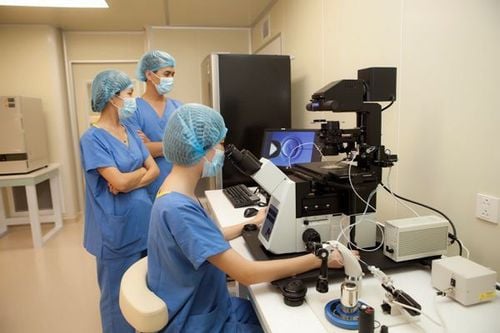
Thụ tinh trong ống nghiệm tại Bệnh viện Đa khoa Quốc tế Vinmec được thực hiện bằng nhiều máy móc hiện đại
Step 5: Transfer embryos into the wife's uterus
Depending on the number of embryos obtained and the status of each couple, the doctor and family will agree on the number of embryos transferred to the uterus and the number of embryos for cryopreservation . Embryos are usually transferred to the uterus after 2 - 5 days after egg aspiration, when the uterine lining is thick, stable, and favorable for the development of the embryo.
If it is frozen embryo transfer, the wife will be given drugs and ultrasound to monitor the uterine lining for 14-18 days starting from the 2nd day of the next menstrual cycle0 to choose the appropriate date and then proceed. Transfer of frozen embryos to the wife's uterus.
Step 6: Pregnancy test after embryo transfer
2 weeks after embryo transfer, the wife will go to the hospital for a blood test to check beta HCG levels.
2 days later, the test should be repeated again.
If beta HCG levels increase by 1.5 times or more: the fetus is developing. The mother needs to continue using the pregnancy medication and go to the ultrasound according to the appointment to determine the gestational sac and the fetal heart. If after 2 days, beta HCG levels do not increase or decrease: Further monitoring is required. When the beta HCG level returns negative (less than 5 UI/l), a miscarriage will occur. In this case, if there are still frozen embryos, the wife can use the frozen embryos to transfer to the uterus in the next cycles without repeating the previous steps.
Step 7: Monitor the fetus
After the embryo has developed into a fetus, pregnant women need ultrasound and periodic antenatal check-ups according to the doctor's appointment to monitor and check the development status of the fetus until the day of delivery. bloom.
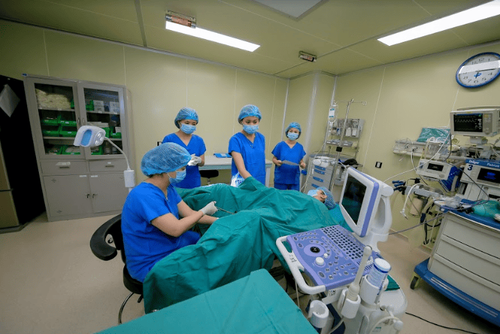
Chuyển phôi vào tử cung tại Bệnh viện Đa khoa Quốc tế Vinmec
4. What's the difference in in vitro fertilization (IVF) in Vinmec?
Customers can come to the Center for Reproductive Support - Vinmec International General Hospital. This is the leading center in Vietnam, which has developed and applied a comprehensive medical examination and treatment process, combining both gynecology and obstetrics and gynecology to provide the optimal method for each patient's case.
Advantages when customers choose Vinmec fertility center:
Equipped with modern equipment, clean air system according to international standards to ensure lab quality, single cabinet system to optimize quality embryo, improving the success rate for each cycle of artificial insemination. Implement most advanced assisted reproductive techniques in the world: ICSI (injection of sperm into the oocyte cytoplasm); support embryo escape membrane; Reproductive reserve: embryo freezing, sperm freezing, oocyte freezing to help customers take the initiative in giving birth at will, transferring embryos on day 5, minimizing pregnancy; male infertility techniques (PESA, MESA, TEFNA, TESE) Besides advanced reproductive support methods, a team of excellent doctors in the country and the world, with prestige and long-term experience in the field of infertility .
Please dial HOTLINE for more information or register for an appointment HERE. Download MyVinmec app to make appointments faster and to manage your bookings easily.




